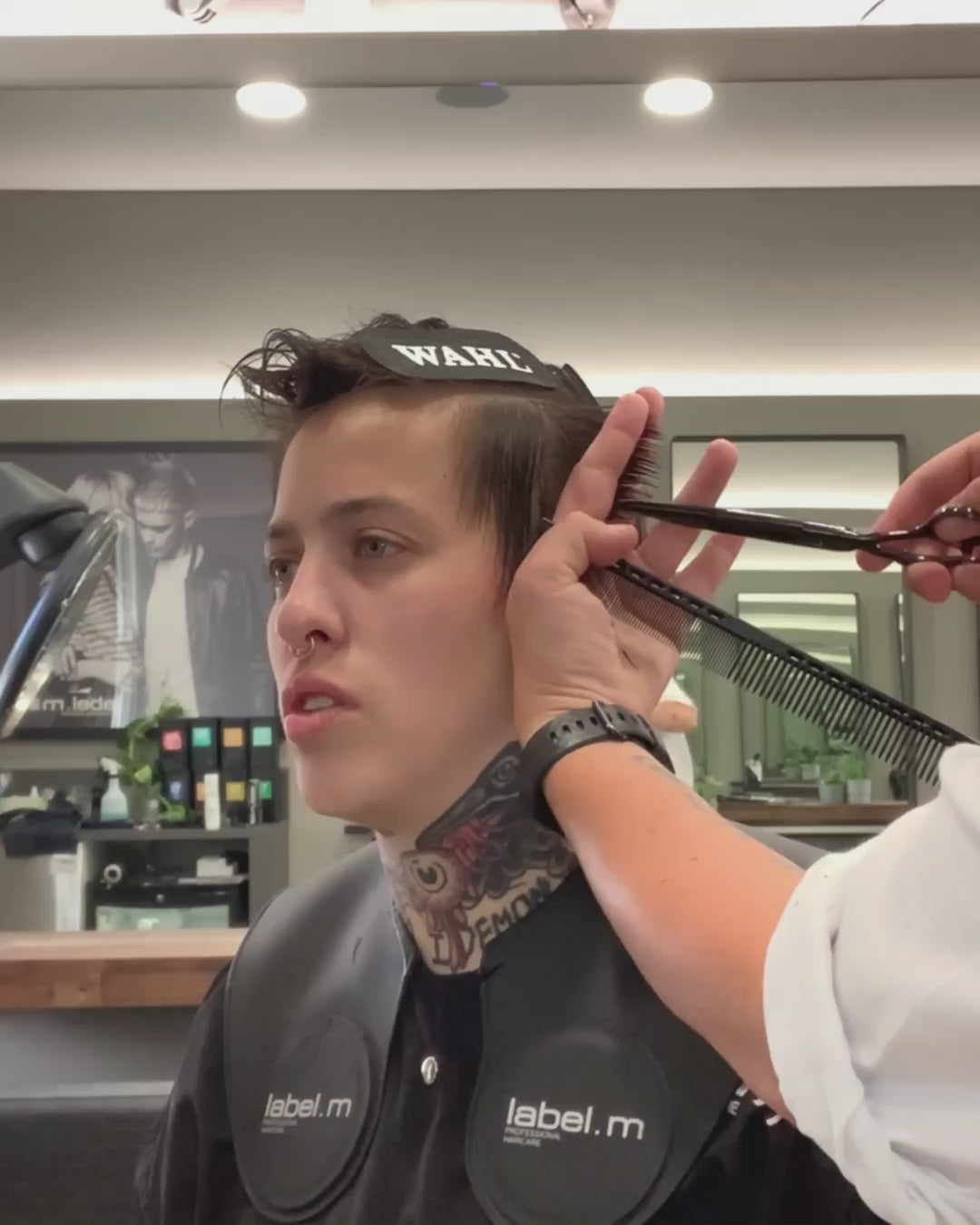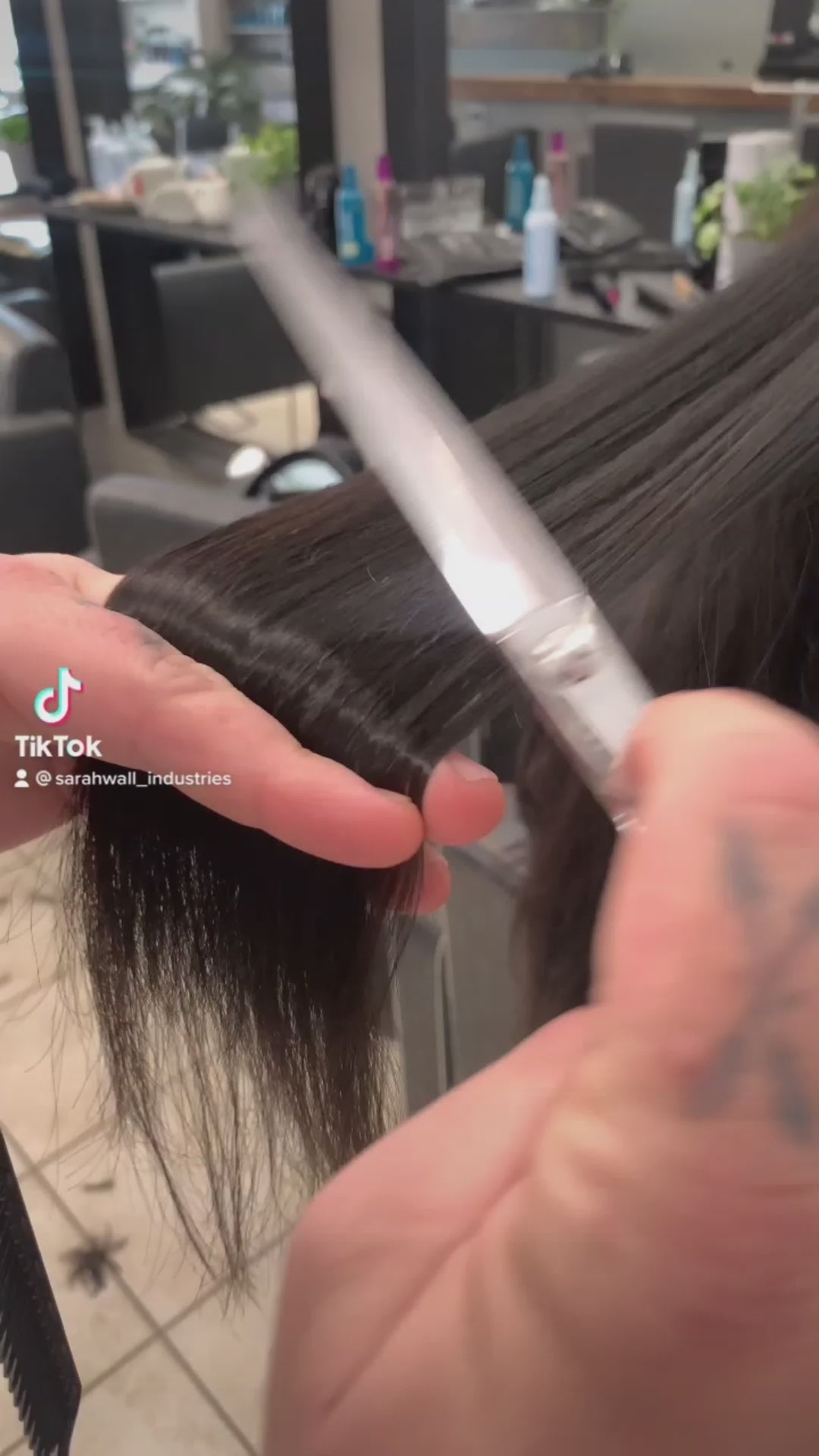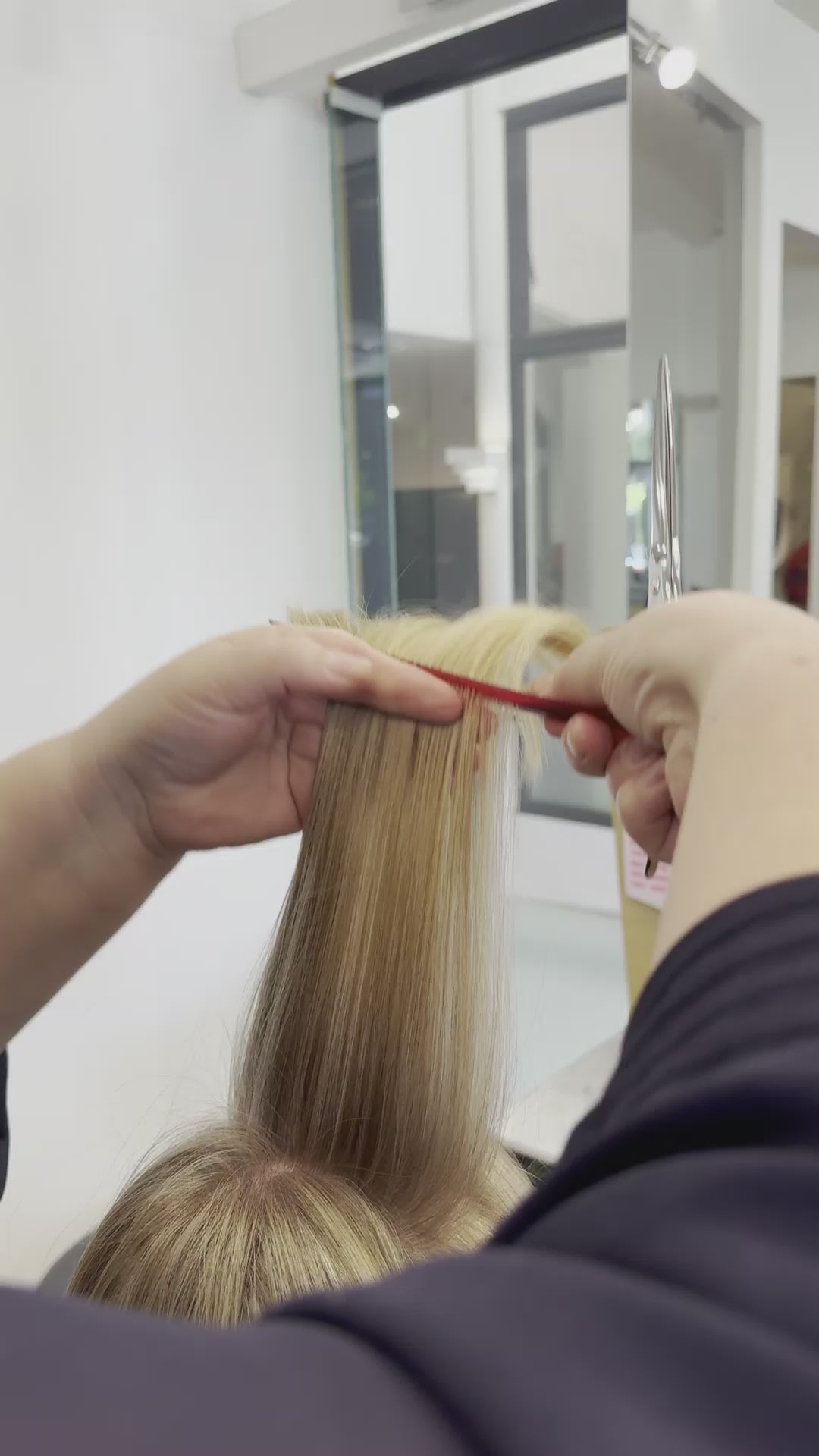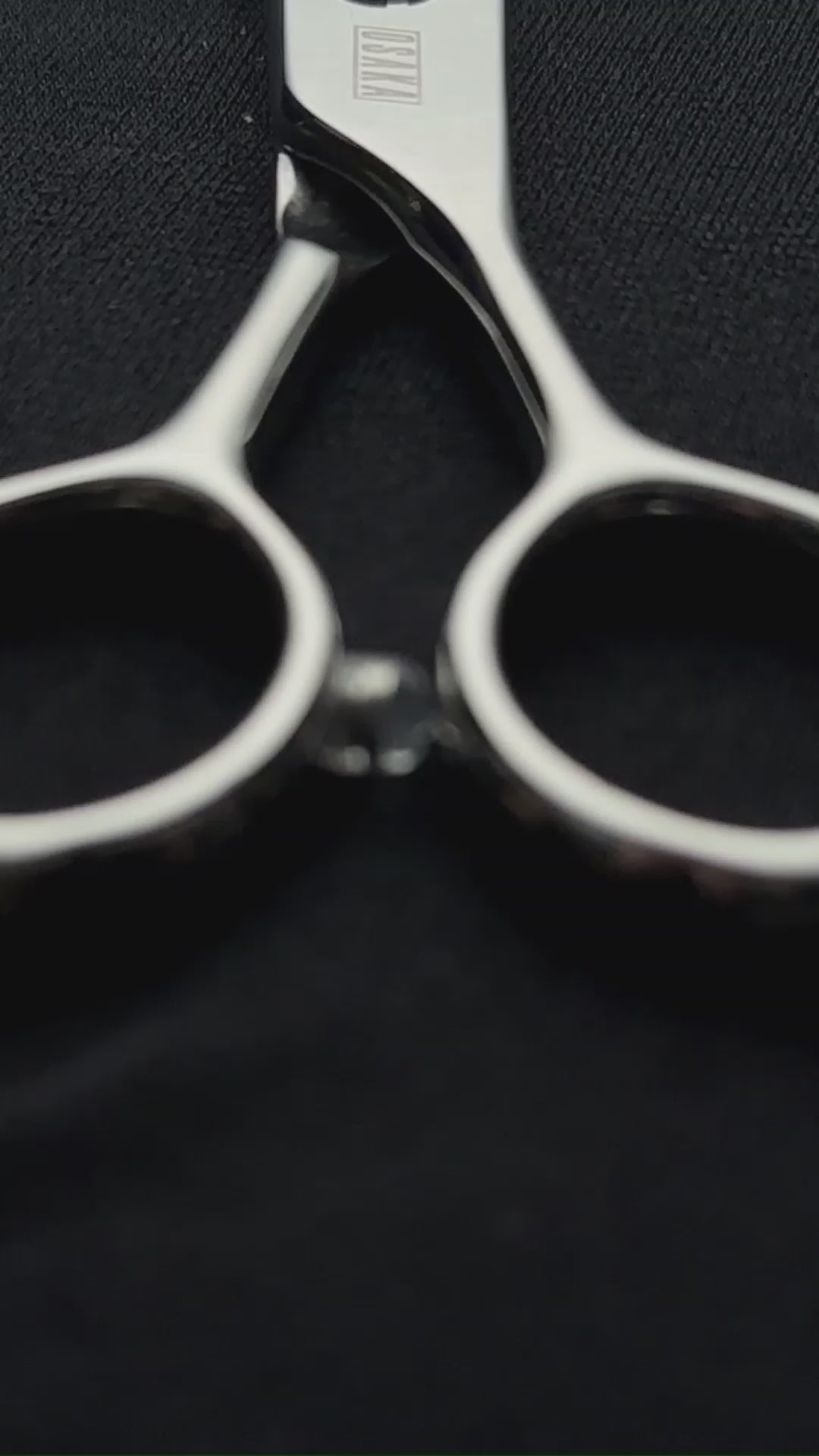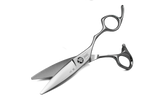Left-Handed Scissors: What Makes Them Different (And How to Choose)
Halfway through the day, and your wrist's already screaming at you. Every cut leaves your hand that bit more worn down — and honestly, you've probably blamed your technique more times than you can count. But here's the thing: it might not be you at all. Left-handed hairdressers are constantly working against gear designed for someone else's hand (the struggle is real, and weirdly invisible to most people).
So what if the answer isn't pushing through the pain? What if it's as simple as finally getting proper left-handed scissors that actually work with your body instead of against it? Because that one switch could be what takes you from drained by 3 PM to finishing strong.

Here's What Truly Left-Handed Design Actually Looks Like
Walk into most beauty supply stores and you'll find scissors labelled "suitable for both hands." Look, those "ambidextrous" scissors you see everywhere? They're basically right-handed scissors with a marketing spin. Real left-handed scissors are built differently from the ground up — the blades actually stack the opposite way, the handles curve to match how your hand naturally sits (not just flipped around), and the steel quality? It's gotta hold up through thousands of cuts without going dull on you. Because honestly, you shouldn't have to work twice as hard just to get a clean line.
With true left-handed scissors, the blade stack gets reversed — so your top blade sits on the left, not the right. When you use standard scissors in your left hand, however, that top blade becomes a wall, forcing you into awkward angles just to track your cutting line. True left-handed designs reverse this setup, which means you finally get an unobstructed view throughout each snip.
Handle ergonomics matter just as much. Using right-handed scissors as a lefty means twisting into awkward holds that build up strain with every snip, piling on over countless cuts. But left-handed handles are shaped to match your hand's easy stance, easing wrist twists and spreading out the load. This setup isn't a fancy extra—it's key to dodging those nagging repetitive injuries.
Steel quality? It's everything. Cheap blades go dull fast and catch on hair—frustrating when you're mid-cut. But Japanese steel is different. It holds an edge way longer and cuts clean every single time, so you can nail slide cuts, point cuts, whatever technique without second-guessing your tools.
Blade Orientation: The Game-Changer for Precision
To get why blade orientation is key, let's peek at how scissors work. As you close them, your thumb presses out while fingers curl in toward your palm—that's the force at play. Right-handed ones are built so those motions squeeze the blades tight, generating the side pressure for smooth, crisp cuts.
Recent research on surgical instrument design reveals exactly why left-handed users struggle with standard tools. A recent 2025 study highlights how right-handed scissors depend on your thumb pushing out and fingers pulling in to keep blades snug. However, lefties using them end up flipping their grip—drawing the thumb inward instead—which feels awkward and demands extra focus and more conscious effort. Meanwhile, this tweak often causes blades to drift apart mid-cut, damaging hair and leaving uneven edges.
True left-handed scissors reverse this engineering, allowing your natural thumb motion to push blades together effortlessly. The result? Cleaner cuts, less hand fatigue, and improved control over every technique.
Handle Ergonomics: Reducing RSI in Busy Salons
RSI hits hard for stylists doing countless cuts each week—it's not just annoying, it's a real threat to your career. Good ergonomics can safeguard your hands for the long haul.
We've got 3D printing now — factories can shape handles any way they want. But most manufacturers won't budge from their right-handed playbook. So what happens? You're staring at maybe three or four options — none of them actually fitting your grip properly. And really, why should you compromise when you're already putting in full days behind the chair?
Properly designed left-handed handles change everything. They feature contoured thumb wells and strategically placed finger supports that naturally align with how your hand actually moves. The result? Less strain on your wrist, fewer aching pressure points, and a comfortable grip that lasts through even your longest salon days. In the end, you'll notice way less tiredness and a real drop in risks for things like carpal tunnel.
Material Quality: Why Japanese Steel Excels
Japanese steel didn't earn its reputation by accident, but is an actual result of centuries of perfecting metallurgy, creating blades that hold their edge longer and cut cleaner than anything else. Its top-notch makeup lets makers craft those super-fine convex edges, slicing smoothly through hair without any crushing mess. For left-handed stylists already fighting against poorly designed tools, premium Japanese steel levels the playing field—giving you the sharpness and durability to execute your vision without limitations.
The Invisible Barrier Sabotaging Your Cuts (And Why "Ambidextrous" Scissors Are Making It Worse)
Right-handed scissors feel wrong in your left hand because they actually are. The entire design hinges on your thumb pushing out while fingers curl in, naturally pressing blades together for clean cuts. Flip hands, though, and those forces work backward instead. But switch it to your left, and your instinctive grip does the opposite, prying them apart and messing up every cut.
A 2025 study on surgical training drives this home for hands-on jobs like yours. It showed lefties matching righties in raw skills, no question. Yet, they kept hitting walls with standard gear and lessons tailored to the majority, leading to real frustration on the job.
It's no secret that about 90% of people are right-handed, which throws up these "invisible barriers" for lefties in pro fields, as researchers call them. But these hurdles are clearly not talking about skill. They’re purely about getting the right gear. Left-handed trainees often deal with more stress, wrestle with tool mechanics, and struggle to position things just so. Plus, finding mentors who truly get left-handed methods? Even rarer.
To nail a point down, it only proved that hand-specific tools boost comfort and speed big time.
How to Choose Left-Handed Scissors That Actually Fit Your Hand (Not Just Your Budget)
Look, picking scissors isn't just a budget thing. It's about whether they'll actually perform when you're slammed with clients. Your hands need to stay sharp and pain-free through every single appointment — that's what matters.
Step 1: Confirm Your True Left-Handed Needs
Start by honestly assessing your dominant hand for cutting. If you naturally reach for scissors with your left hand and feel most controlled cutting with your left, you're a candidate for authentic left-handed designs—not ambidextrous compromises.
Step 2: Prioritise Blade Type and Size
Most stylists find 5 to 6.5 inches ideal—enough blade for speed, but controlled enough for detail. And convex edges? They're honestly perfect for slide cutting. If your budget allows, prioritise convex edges crafted from Japanese steel.
Step 3: Test for Comfort and Durability
Whenever possible, get your hands on the scissors first — do they feel natural in your palm, or are you already compensating? Try a few snips—keep your wrist straight, or does it crank awkwardly? Meanwhile, inspect the tension setup; tweakable screws let you dial in just the right feel for effortless cuts.
Step 4: Factor in Accessories and Maintenance
Good scissors won't stay sharp forever on their own. Invest in a solid case and find a reliable sharpening expert who understands left-handed blades. Experts familiar with left-handed blade geometry can safeguard your investment, keeping cuts sharp and spot-on every time.
Elevate Your Toolkit with OSAKA: Precision for Left-Handed Pros
Finding scissors that truly understand left-handed needs requires a manufacturer committed to authentic design. OSAKA Scissors brings over 30 years of expertise in crafting premium Japanese scissors specifically for professionals who refuse to compromise.
OSAKA's left-handed range features reversed blade orientation engineered for your natural cutting motion, convex edges hand-honed from legendary Japanese steel, and offset ergonomic handles designed to reduce wrist strain. Our expert sharpening service keeps your blades performing at peak condition, with fast, free shipping on orders over $200.
Why OSAKA Stands Out In The Australian Market
OSAKA's partnership with PASSION Scissors brings international expertise to the Australian professional community. Our philosophy centres on simplicity and functionality—allowing superior Japanese craftsmanship to take centre stage. Most importantly, OSAKA recognises that left-handed professionals deserve tools designed specifically for them—not adapted compromises.
End the Struggle and Upgrade to Tools Built Specifically For Your Hand
You've struggled long enough with scissors that simply weren't designed for lefties. That's exactly why OSAKA's professional left-handed scissors finally put those daily frustrations behind you.. You'll get clear sightlines thanks to smart blade setup, handles that ease wrist pressure and fend off injuries, plus top-notch Japanese steel for reliable, every-cut sharpness.
OSAKA's left-handed range transforms your daily experience behind the chair—delivering the precision, comfort, and reliability you deserve. Visit OSAKA Scissors for expert guidance on selecting the perfect tools for your hand, your technique, and your career. Experience the difference that proper design makes—your hands will thank you.





